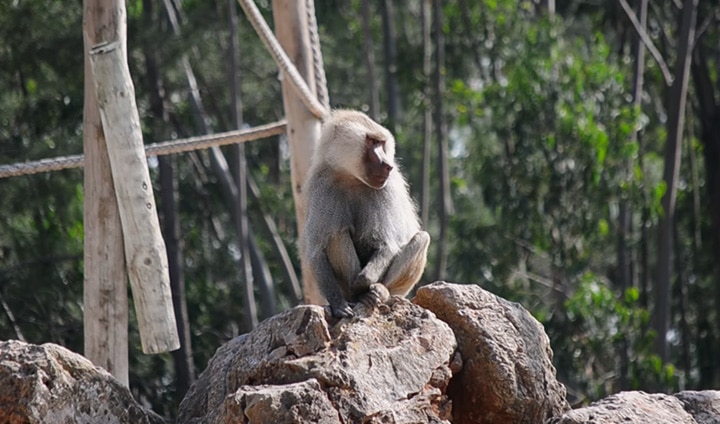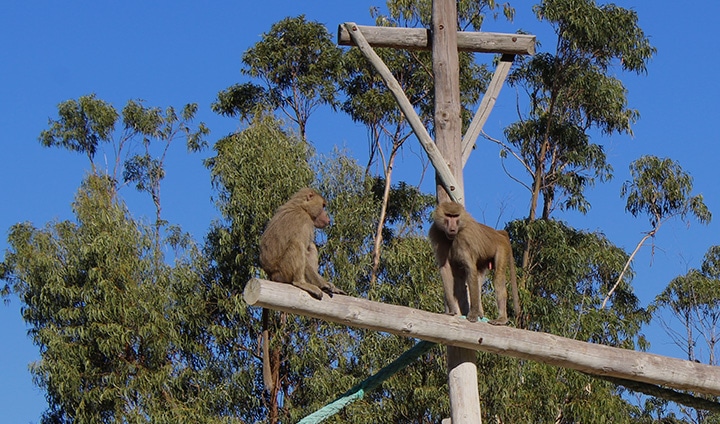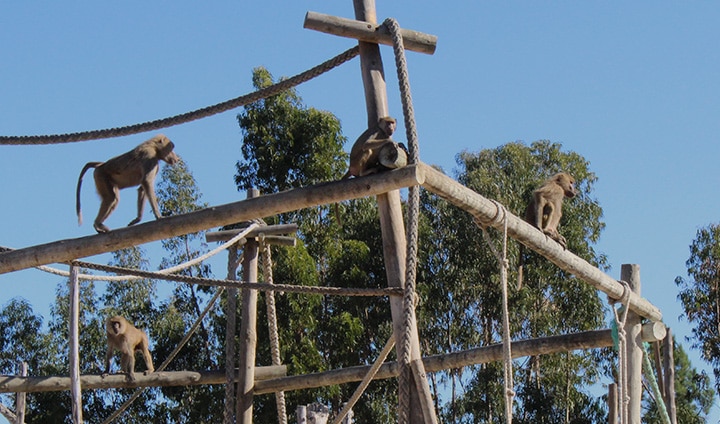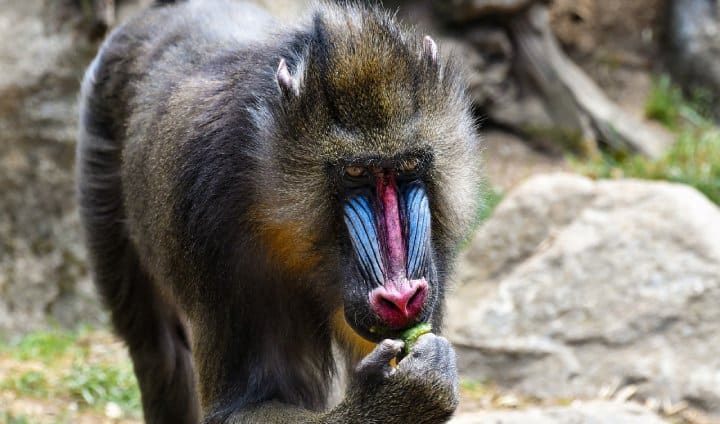Diet: Omnivorous and opportunistic, based on herbs, sprouts and fruits of desert shrubs, as well as invertebrates, especially insects (like locusts). They can travel almost 20 km a day searching for food.
Reproduction: Males are considerably larger than females (as for other species of baboons) and develop a huge grey mane with age, which only occurs in this species. Females (more brownish) reach sexual maturity after 5 years (males after 7), and have a sexual cycle of 30 days, giving birth, usually to one single baboon, after 70 to 73 days of gestation. The young are dependent on the mother for the first 6 months, being then progressively weaned. After 2 years (males) and 3 and a half years (females), they leave the parental harem, going to another group, usually in the same clan.
Habitat: Baboons, in general, occur throughout Sub-Saharan Africa, in savannahs and on rocky slopes, being relatively common and well-adapted primates.
Behaviour: The basic social unit is the harem, consisting of a dominant male and up to 9 females with their young ones. Multiple harems related by blood ties can join to sleep or to find food, constituting a clan, which sometimes converge with other clans, especially for secure sleeping, constituting bands. Activity is essentially diurnal and terrestrial, although they are good at climbing trees and cliffs, mainly to sleep.
Conservation: In the past, the distribution of this species extended up to Egypt where it was considered to a sacred animal to the god Thoth, God of Knowledge and Lord of Time. Nowadays baboons enjoy much less protection and veneration, often coming into conflict with Man, whose irrigation systems and agriculture expand into the ancestral areas of these primates.
Class: Mammals
Order: Primates
Family: Cercopithecidae
Genus: Papio
Species: Papio hamadryas
Body length: 60 to 76 cm
Tail length: 8 to 60 cm
Weight: up to 18 kg
Longevity: 30 years in captivity and 20 years in the wild






